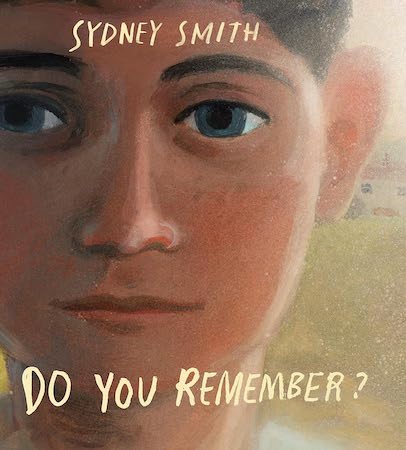
(NOTE: I was given a copy of this book but all opinions are my own.)
Do You Remember by Sydney Smith starts out with a mother and son snuggling in bed. The mother asks the son if he remembered a picnic where the son looked for bugs and snakes. Yup. He remembered.
The boy then asked the mom if she remembered that he picked some berries at the picnic. Did she remember that, too?
Yup. She remembered.
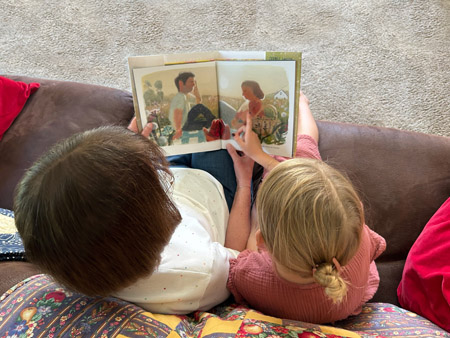
Then the son asks the mother if she remembered his birthday when he got a bike.
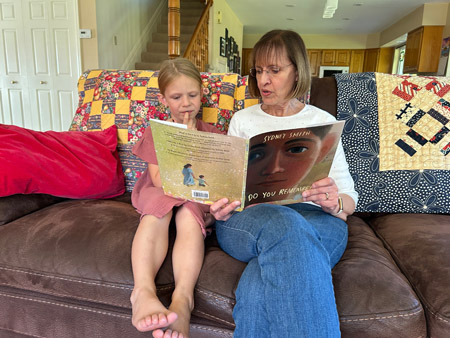
Did the mother remember that she helped him get on the bike?
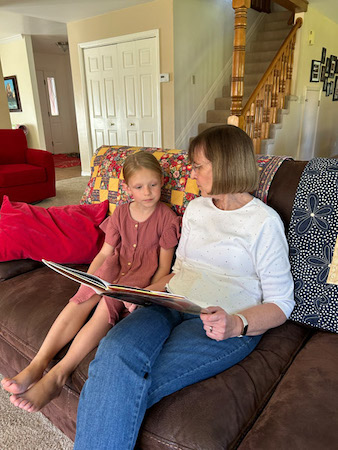
And that as soon as she let go the son lost control and crashed? Remember that?
Yup. She remembered.
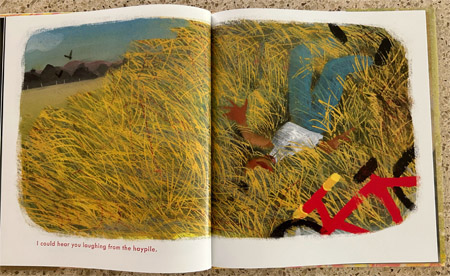
Then they reminisced about a rainstorm, about all of the thunder and lightening, and that the power went out.
Then they talked about packing up everything they owned and leaving their home.
Let’s pause here for just a wee moment because I want to talk briefly about the illustrations.
Sometimes illustrations reflect exactly what the words in the book say. For instance, in a counting book, the words might say something like ‘5 apples’. Then there would be a picture of 5 apples.
Sometimes the illustrations in children’s picture books add a deeper meaning to the story’s plot. Such is the case with this book.
I also want to briefly chat with you about divorce.
Divorce can be scary for a young child — scarey about all of the unknown things in her future. She might be sad (or angry) that the family is broken up. She might feel anxious and worried. She might feel fearful because of all of the changes happening in her life. She might be sad that she’s leaving her friends behind and that she won’t have any at her new home.
Now. Back to the story.
The son ask the mother if she remembers that they traveled farther away than they’d ever traveled before, that there were lots of cars speeding past them, and that they got lost.
Yup. She remembered.
It’s at this moment that the illustrations become extremely important. This is where the pictures add depth to the words.
Look at the picture below. On the left-hand side, do you see the dad holding a teddy bear as he leans through the truck window?
Now look at the pictures on the right side. Do you see the father standing in the yard waving good-bye? And that the boy watches the dad as he and his mother drive away?
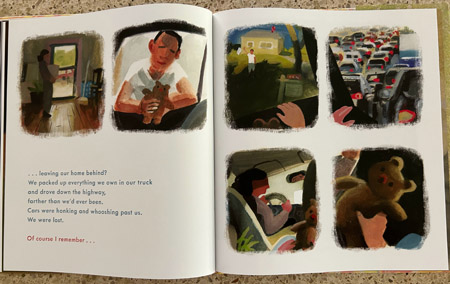
The words in this book don’t say one thing about divorce. But because of the illustrations, I’m assuming that the parents got divorced. I’m assuming that the dad stays behind because you don’t see him in any more pictures.
After talking about their memories, the son gets out of bed and looks out the window for a while. He says he wants to make that moment a memory, too.
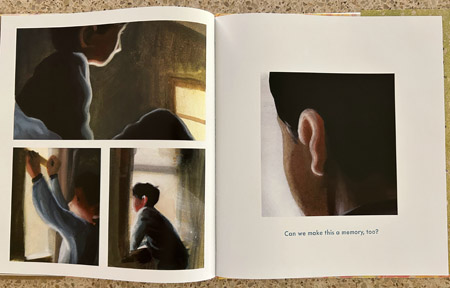
The son climbs back in bed and snuggles with his mother.
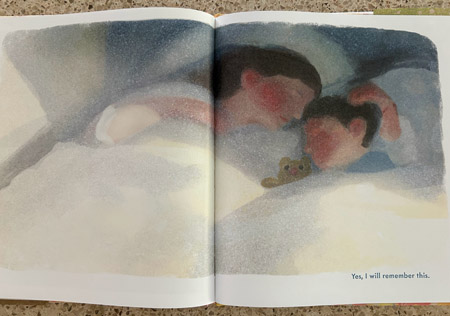
She tells him, yes, they could make memories of this moment.
They decide to remember the first day in their new home and that it was just the 2 of them. (This is as close as the book gets in talking about divorce.)
They decided to remember the rumbling of the buses outside their window, the smell from the bakery across the street, and how the sunrise seemed so magical, and that they weren’t worried. They knew they’d be just fine.
If you have grandkids whose parents are divorced, this would be a good book to read to them. It provides an opportunity for a child to talk about and to sort out the complex emotions during a major life change like divorce. Talking things out is so good for kids.
The ending is not sad. This book provides hope that things will turn out okay. (And maybe it can bring hope and peace to your heart, too.)
So, all of you grandmas out there (or any one who is divorced and has young children), this would be a good book to add to your personal library. And good to read often with your child/children so that they can work through their feelings.
You can get a copy of Do You Remember by Sydney Smith for $19 on Amazon,





2 thoughts on “Do You Remember”
Where did the illustrations come from?
Can you use real pictures?
Mmmm . . . I’m not sure exactly what you’re asking. Sydney Smith is the author and illustrator of the book. So he drew the illustrations. Could an author/illustrator use real pictures. Yes they could — if they wanted to.